Solar Eclipse Photos
June 21, 2001
Chisamba, Zambia, Africa
These photos were taken by Dr. Gordon Telepun, of Decatur, Alabama. Although Mitzi knew that Gordon would be going to Zambia, she didn't know the exact location from which Gordon would be viewing the eclipse (so Elizabeth and I didn't see him there). Gordon set up at a farm in Chisamba at 15 deg South latitude, 28 deg 10 min East longitude. Gordon took some great photos...not bad for his first experience! He used Kodak Ektachrome 200 slide film for the images you see below. These images show the evolution of the eclipse very well. First Contact is that moment when the Moon just begins to slide over the disk of the Sun (and is the first image on the left, in the table below). Second contact occurs when the last little bit of the bright disk of the Sun is covered (image on the right side, top row). The middle row shows how totality can look with different exposures. A short exposure, 1/60th of a second, shows only the innermost part of the corona. However, 1/2 sec, shows great detail in the corona (middle row, far right) and also shows how far away from the edge of the Sun the corona exists. Third contact is when the bright disk of the Sun is uncovered on the opposite side. Fourth contact marks the end of the eclipse (see the last image, bottom row on the right). Click on each image for larger versions.
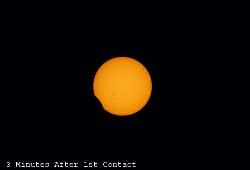
|
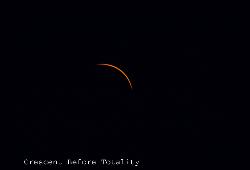
|

|
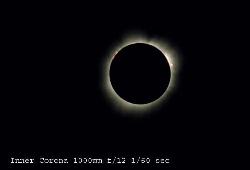
|
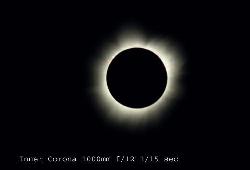
|
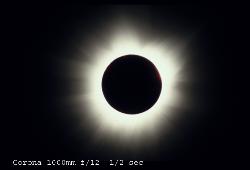
|
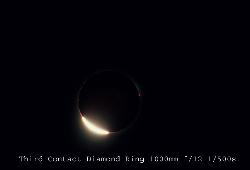
|
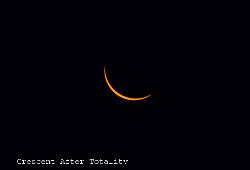
|
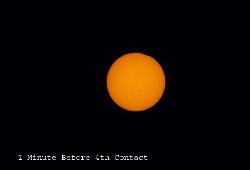
|
Back to the comparison photos
Back to Elizabeth's photos
Back to eclipse trip
Back to Girl Scouts' index and FAQ page
|
||||||||||||||||||||

